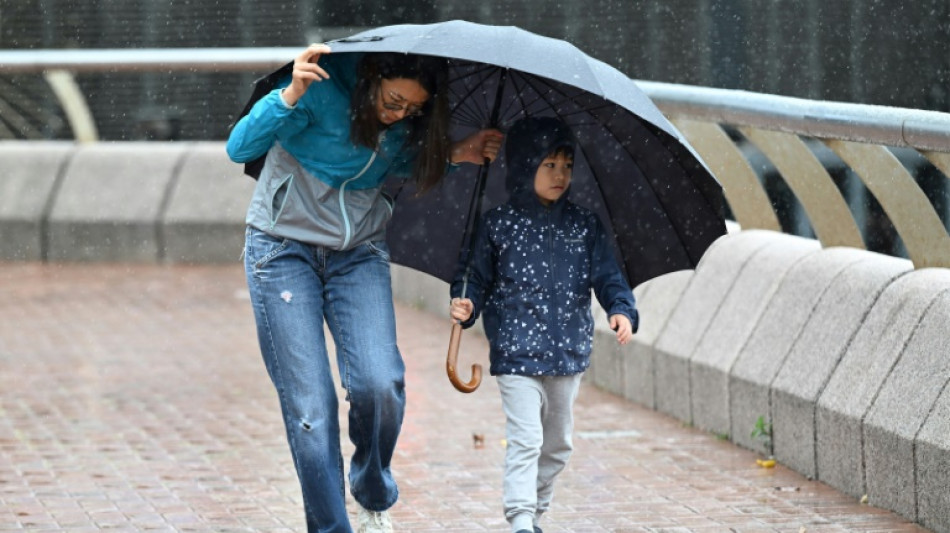
RBGPF
61.4000

Typhoon Koinu tracked towards China's resort island of Hainan on Sunday night after skirting Hong Kong, bringing heavy rains and powerful gusts while prompting the closure of transport services and schools in the financial hub.
Koinu comes just a month after Hong Kong was lashed by Typhoon Saola, which triggered its highest "T10" storm alert.
A week after that, the city experienced its highest rainfall in nearly 140 years, flooding subway stations and malls, and causing landslides.
Typhoon Koinu was at the third-highest alert in Hong Kong's warning system for most of the day. It was upgraded to "T9" for more than four hours -- when the typhoon was closest to the city -- before the observatory dropped it back down to "T8" at 11:50 pm local time (1550 GMT).
"In the past couple of hours, Koinu tracked westwards steadily. The associated hurricane force winds are gradually departing from the seas south of Hong Kong," said the observatory, issuing a map that showed Koinu's path headed directly for China's island province of Hainan.
It was about 70 kilometres (43 miles) south-southwest of Hong Kong around midnight and was forecast to edge closer to the western part of the Pearl River Estuary.
Despite the storm downgrade to "T8" -- which will be in place until 11 am Monday -- the observatory warned the public "precautions should not yet be relaxed", and said the gales generated by Koinu were expected to persist.
The "T8" warning level is triggered when a storm's maximum sustained wind speed reaches 117 kilometres (72 miles) per hour. Koinu's were observed at 145 kilometres (90 miles) per hour.
- Flights cancelled -
Around 90 flights were cancelled Sunday and 130 others delayed throughout the day due to the storm, according to Hong Kong's Airport Authority.
Daycare centres, cargo terminals, ferries and buses suspended operations Sunday, while schools -- also closed -- will remain shuttered Monday.
Hong Kong's government received reports of more than 20 people wounded during the typhoon Sunday, as well as more than a dozen incidents of fallen trees due to strong winds.
In China's Guangdong province -- where Koinu is expected to sweep past en route to Hainan -- the cities of Zhuhai and Jiangmen issued a Level III emergency response, according to Xinhua news agency Sunday.
That meant more than 35,500 fishing boats had to return to port, while dozens of coastal scenic areas were temporarily closed.
Before moving to Hong Kong, Koinu had grazed nearby Taiwan, bringing torrential rain and record-breaking winds to its outlying Orchid Island.
The storm left at least one dead, and knocked out power to hundreds of thousands of homes.
Southern China is frequently hit during summer and autumn months by typhoons that form in the warm oceans east of the Philippines and then travel west.
But climate change has made tropical storms more unpredictable while increasing their intensity -- bringing more rain and stronger gusts that lead to flash floods and coastal damage, experts say.
P.E.Steiner--NZN